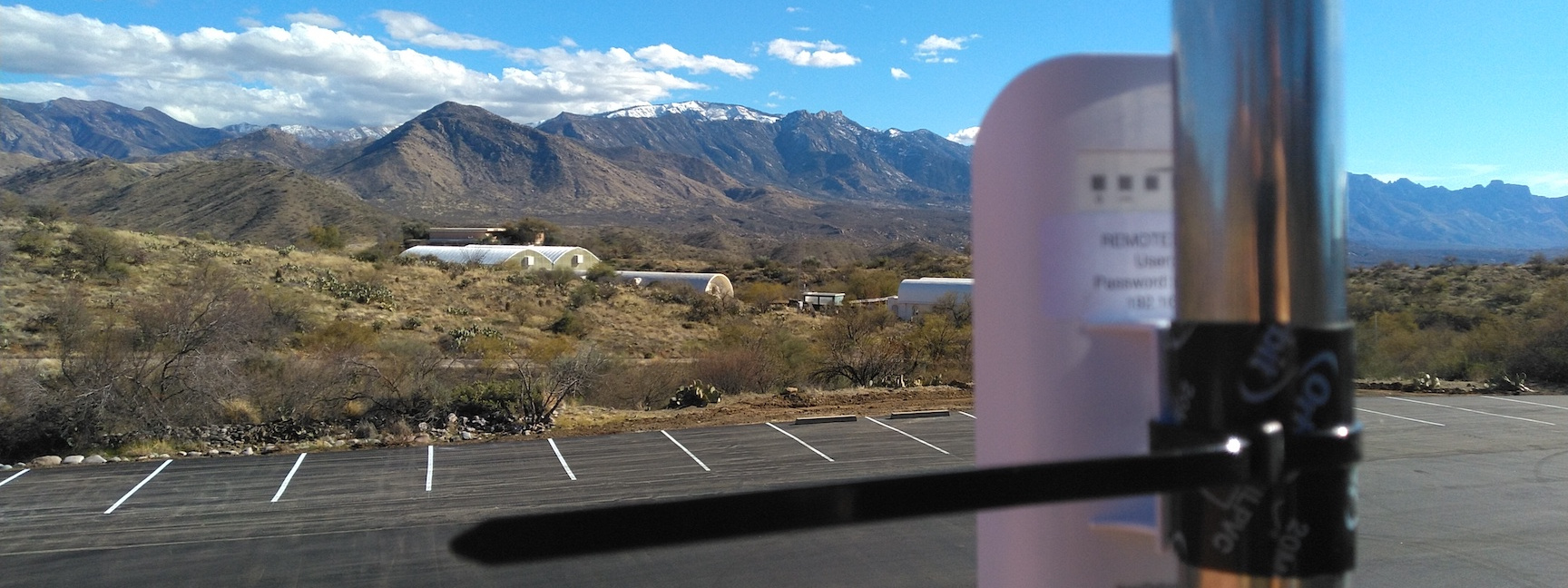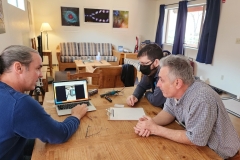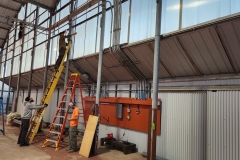
With the completion of the SAM Operations Center and Mission Control, it is imperative that we establish a point-to-point, ops-to-habitat wireless data feed in order that crewed missions are provided stable email communication, and for remote environmental control and life support systems (ECLSS) monitoring.
With the first two missions at SAM (Inclusion I and II) the data feed was provided by a dedicated cellular hotspot with the dedicated email server placed in the adjacent Mars yard. It worked flawlessly despite the ad hoc nature of that particular configuration.
In the fall of 2023 the University of Arizona provided SAM Ops with a dedicated fiber optic drop that is mostly outside of the standard UA network, meaning we manage the provided network from the demarcation in. This provides us with a good bit of autonomy and room to expand our infrastructure as we stand-up servers internal to our Operations Center and at SAM too.
For the third crew at SAM, Imagination I, we completed the second prototype of SIMOC Live, a version of SIMOC that receives live data from an ad hoc, mesh network of sensors hosted by Raspberry Pi Zero computers. Each of the nodes, in this iteration, are mounted on a plate of aluminum which is itself mounted in four locations across the habitat: lung, Test Module, Engineering Bay, and Crew Quarters.
The data is immediately visible on a touch-screen display in the SAM Engineering Bay, and then via a light-travel time delay (1.3 seconds for the Moon; 7-20 minutes for Mars) in Mission Control where the data is projected onto a wall-mount silver screen.
This invaluable project brought Ezio Melotti and Franco Carbognani from Italy, Christopher Murtagh from Canada (via Mexico), together with Matthias Beach and Kai Staats of the SAM team at Biosphere 2. How all of these people came together is a story in and of itself.
Chris was once a user of Yellow Dog Linux and then became the systems administrator for Terra Soft Solution, Kai’s company of ten years that produced the leading YDL operating system. Kai has relied upon Chris’ expertise for more than twenty years across a few startups and dozens of projects, from super computers at Argonne National Lab to film rendering in India to life support monitoring on Mars.
Franco and Kai met quite serendipitously in Cork, Ireland where they both attended the International Space University Summers Studies Program 2017. Franco was then and remains now a Senior Engineer at VIRGO, the Italian gravitational-wave observatory. At that time Kai was working through Northwestern University as a data analyst for LIGO, the American gravitational-wave observatory. Franco brought to ISU his expertise in ad hoc networks and miniature sensor arrays for the IOT (internet of things) thesis project. Two years later Franco introduced Ezio to Kai to assist with SIMOC development. Ezio is a leading core Python developer with more than twenty years experience in developing the language, code development, and training. Regular SAM team member Matthias brings a strong background in IT infrastructure build-out and was fully at home pouring concrete, standing up communications towers, running cables, and testing ethernet drops. Kai Staats has a strong background in super-computing architecture, basic sys admin, and like Matthias, IT infrastructure build-out.
For everyone to converge at Biosphere for SAM was … a dream come true. We could not ask for more experience, expertise, and enthusiasm. Thank you!



